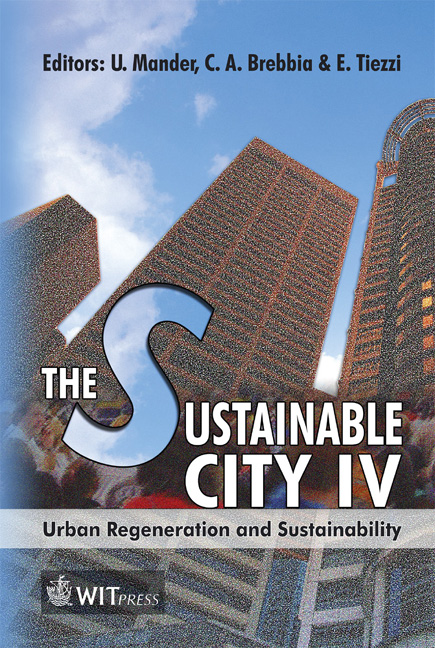Use Of Atmospheric Modelling For The Territorial Planning Of Technological Structures
Price
Free (open access)
Transaction
Volume
93
Pages
10
Published
2006
Size
609 kb
Paper DOI
10.2495/SC060191
Copyright
WIT Press
Author(s)
G. Genon, E. Brizio & M. Poggio
Abstract
The introduction and distribution of transport activities, energy infrastructures and technological plants throughout the territory are operations that must be conducted taking into consideration some constraints or objectives, and that of respecting environmental quality and compatibility seems to be increasingly more important, in particular with reference to the atmospheric transport of gaseous emissions. On the basis of defined emission scenarios, corresponding to hypothesised technological conditions, it is necessary to evaluate the loads of the emitted pollutants and then to evaluate the modifications of the air quality on the basis of atmospheric transport mechanisms. In order to obtain such results, it is necessary to use the correct instruments to first of all evaluate the value of the emissions and then to describe the atmospheric transport in a reliable way and to establish the damage in terms of externalities or effects on human health. In order to define correct territorial planning instruments, different scenarios derived from different location or technological choices must be compared. Three examples are given to illustrate such an approach: - optimal collocation of an incinerator for municipal solid waste, taking into consideration both emission and impact aspects and the benefit that can be derived from the elimination of the environmental load due to conventional thermal and electric systems that are substituted by new systems; - evaluation of either concentrated or distributed cogeneration systems, in consideration of the different potentialities, technological configurations and spatial distributions of the different possibilities; - verification of the effect of interventions to limit urban vehicle traffic or of a different road distribution on the quality of the air. Some results that were obtained for the three aforementioned cases for the Piemonte Region are presented here, but the main purpose of this article is to show the necessity of using this type of approach as an aid to territorial choices. Keywords: atmospheric pollution, territorial planning, models, externalities, energy.
Keywords
atmospheric pollution, territorial planning, models, externalities, energy.





